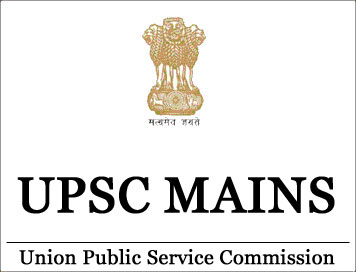(HOT) UPSC Current Affairs 2025 PDF
NEW! The Gist (NOV-2025) | E-BOOKS
(Download) UPSC IAS Mains Optional Botany (Paper -1 & Paper -2) Exam Paper - 2016

(Download) UPSC IAS Mains Optional Botany (Paper -1 & Paper -2) Exam Paper - 2016
Exam Name: UPSC IAS Mains
Year: 2016
Subject: Botany
Exam Date: 9-12-2016
Botany Paper-1
SECTION-A
1. Briefly describe the following in not more than 150 words each: 10x5=50 marks
(a) Role of microbes in mining and pharmaceuticals 10 marks
(b) Ultrastructure of flagella in Algae 10 marks
(c) Role of soil solarization in disease control 10 marks
(d) Lytic cycle of bacteriophage 10 marks
(e) Physiological relationship of two partners in Lichens 10 marks
2.(a) Explain the molecular basis of infection and disease resistance in plants. 15+5=20 marks
(b) Describe the characteristic features of Cyanobacteria and mention its role in nitrogen fixation. 10+5=15 marks
(c) Write down the characters of pteridophytes resembling bryophytes and gymnosperms. 7.5+7.5=15 marks
3.(a) Discuss the evolution of Sporophyte in Bryophytes. 20 marks
(b) Trace the transition from multisporangia to conidia in Mucorales with illustrations and suitable examples. 8+7=15 marks
(c) Describe the different stages in the development of female gametophyte within the ovule in Cyeus. 15 marks
4. Give the name of the causal organism, symptoms and control measures of any four important crop diecaces caused respectively by 12.5x4=50 marks
(a) a fungus
(b) a bacterium
(c) a virus
(d) a mycoplasma
SECTION-B
5. Briefly describe the following in about 150 words each : 10x5=50 marks
(a) Forensic application of palynology 10 marks
(b) Procedure and maintenance of Herbarium 10 marks
(c) Tumour cells and their culture 10 marks
(d) Xylem and phloem differentiation 10 marks
(e) Energy plantations 10 marks
6.(a) Describe the principles and application of embryo culture techniques, mentioning the protocol for embryo culture. 15+5=20 marks
(b) Write an account of the following families in regard to their floral structures. Give the botanical names of three important plant species belonging to each of the families and specify their uses : 10x3=30 marks
(i) Asclepiadaceae
(ii) Musaceae
(iii) Apiaccac
7.(a) Discuss the principle and application of Numerical Taxonomy 5+10=15 marks
(b) Give the botanical names of latex yielding plants with narcotic properties and also write the names of the plant-parts used therein. 7.5+7.5=15 marks
(c) How anthers and pollens are cultured in vitro ? Discuss its importance in the production of haploid plants. 12+8=20 marks
8.(a) Compare and contrast the systems of classification of angiosperms proposed by Hutchinson and Takhtajan. 10+10=20 marks
(b) Differentiate between normal and abnormal secondary growth in dicot stem. Discuss with suitable examples. Draw labelled diagrams. 10+5=15 marks
(c) Write notes on the following: 7.5+7.5=15 marks
(i) Heart wood and Sap wood
(ii) Different types of trichomes
Botany Paper-2
SECTION-A
1. Explain the following: 10x5=50 marks
(a) Polyteny differs from polyploidy 10 marks
(b) Factors affecting recombination frequencies 10 marks
(c) Chi-square test as a test of goodness of fit 10 marks
(d) C-value paradox 10 marks
(e) Chemical mutagens 10 marks
2. (a) Explain and describe the tools and techniques of FISH. 20 marks
(b) Describe the basic structure of a nucleosome. 15 marks
(c) "The consequences of translocations are profound. They lead not only to a change in gene linkage in the translocated sections but also to easily incurred meiotic abnormalities." Discuss. 15 marks
3.(a) Citing suitable evidences, explain plastid inheritance in four o'clock plant. 15 marks
(b) Discuss Inbreeding depression versus Heterosis. 15 marks
(c) How does the Ins P3/DAG pathway participate in the process of translocation of cellular signals ? 20 marks
4. Briefly describe the characteristics and applications of the following: 10x5=50 marks
(a) Back cross method 10 marks
(b) Restriction endonucleases 10 marks
(c) Transgenic plants as living Lioruuclor's 10 marks
(d) Molecular markers 10 marks
(e) Retroviruses as vectors 10 marks
SECTION B
5. Explain the following: 10x5=50
(a) Apoenzyme 10 marks
(b) Ethylene as a volatile hormone 10 marks
(c) Soil salinity also restricts the growth of plants 10 marks
(d) Taiga or Boreal forests 10 marks
(e) "The pyramid of energy always takes a true upright shape." Why? 10 marks
6.(a) Describe the role of glyoxysomes in conversion of fats into more mobile molecules. 15 marks
(b) Distinguish between phloem loading and phloem unloading.15 marks
(c) What is Niche overlap ? Narrate the biogeographic classifications of India. 5+10=15 marks
7.(a) What are the functions of the enzymes which need copper, zinc and molybdenum as their co-factors ? 15 marks
(b) Enumerate the effects of oil spillage and suggest the control and remedial measures of it. 5+5+5=15 marks
(c) Define ecological succession. Describe the causes and basic types of ecological succession. 5+10+5=20 marks
8. Briefly describe the given terms and emphasize their importance/ significance 10x5=50 marks
(a) Recycling is an integral part of solid waste management 10 marks
(b) 0TEC 10 marks
(c) Allosteric enzymes and Feedback control 5+5=10 marks
(d) Biosafety and Bioremediation 5+5=10 marks
(e) Solar pond 10 marks
DOWNLOAD 10 YEARS UPSC MAINS BOTANY PAPERS PDF
DOWNLOAD UPSC MAINS G.S. (1-4) SOLVED PAPERS PDF
DOWNLOAD UPSC MAINS G.S. 10 Year PAPERS PDF
DOWNLOAD UPSC IAS EXAMS E-BOOKS PDF
UPSC Mains General Studies Study Kit
<< Go Back to Main Page
Courtesy: UPSC


